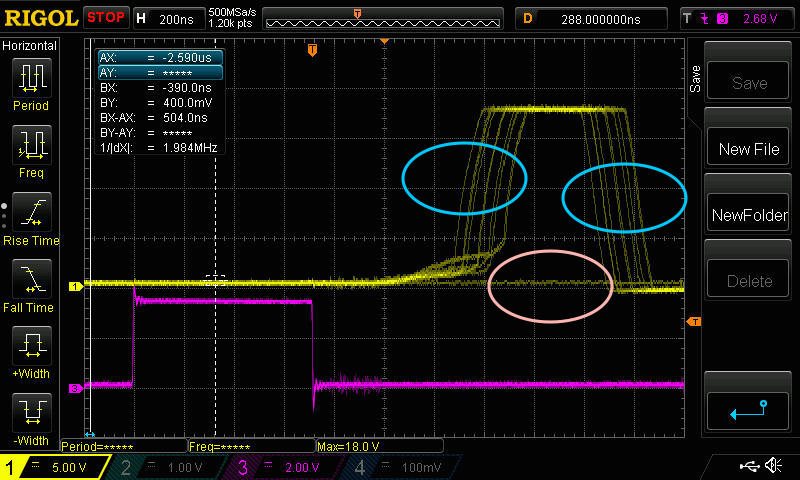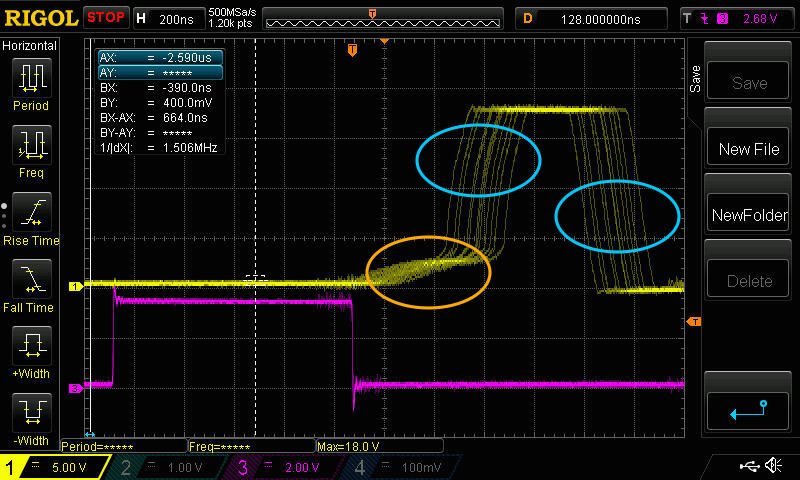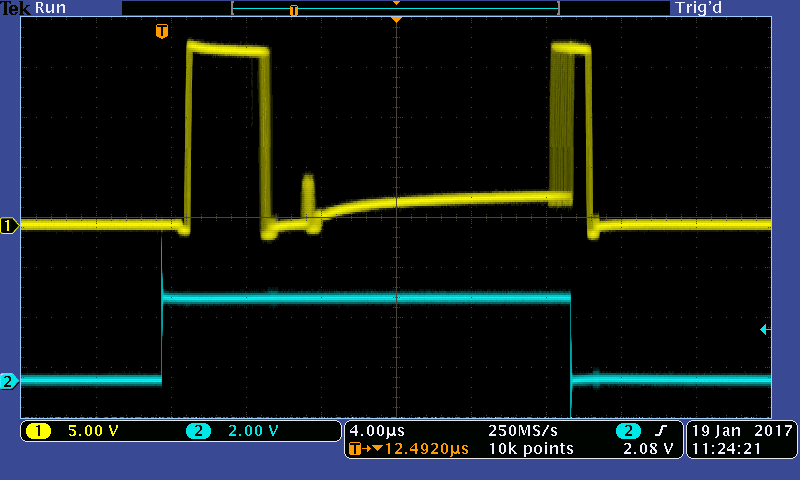Operating with 20kHz PWM Frequency, and at low duty cycles, a constant but inconsistent scratching noise (around the 500-1khz freq) occurs. The lower the duty cycle, they louder it gets. Varying the PWM frequency/period does not affect the scratching frequency. Stalling (holding the motor shaft) does not affect the frequency (It isn't mechanical, bearings, etc.). We've taken a different motor controller and ran the same code and the noise is no longer there. Is this some sort of decay problem or slew rate issue with the DRV8842?
Thank you for the help.





